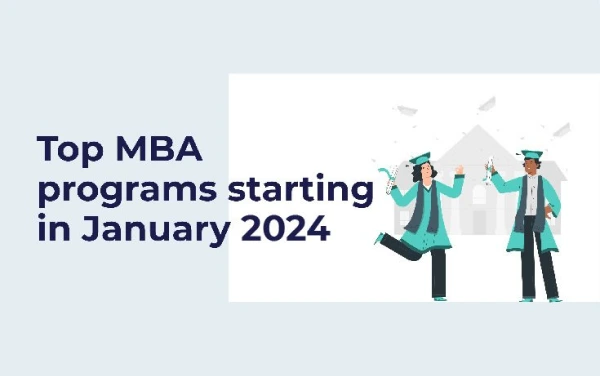Harvard vs. Stanford MBA: Which is Right for You

Choosing between Harvard vs. Stanford MBA can be a hard task. Both schools are consistently ranking among the top business schools globally. They offer ample opportunities for career advancement, leadership development, and networking. However, these two institutions have distinct characteristics that may make one a better fit for you depending on your choices.
In this post, we will look into the features of both programs like class profile, curriculum, tuition costs, scholarships, etc. This would help you determine which MBA program is the right fit for your career.
Overview of HBS and Stanford GSB
Harvard Business School is renowned globally for its leadership development and distinctive case study method, which emphasizes real-world business challenges. Established in 1908, HBS is located in Boston, Massachusetts, and offers a unique educational environment within a vibrant business community.
Stanford GSB, located in the heart of Silicon Valley, is famous for its entrepreneurial focus and innovative curriculum. Founded in 1925, the school fosters a dynamic ideal for students aiming to make an impact in their career.
Class Profile: Harvard vs. Stanford MBA
Here’s a comparison of the Harvard vs. Stanford MBA class profiles compiled into a table:
| Criteria | Harvard Business School (HBS) Class of 2026 | Stanford GSB Class of 2025 |
|---|---|---|
| Class Size | 930 students | 424 students |
| Women | 45% | 44% |
| International Students | 35% | 39% |
| Work Experience (Average) | 5 years | 5.1 years |
| Countries Represented | 70+ | 55 |
| U.S. Students of Color | 52% | 53% |
| GMAT Range | 540–790 | 560–790 |
| Top Undergrad Majors | Engineering, Business, Economics | Engineering, Economics, Business |
Program Structure: Harvard vs. Stanford MBA
Here’s a table comparing the program structure of the Harvard vs. Stanford MBA programs:
| Criteria | Harvard Business School (HBS) | Stanford Graduate School of Business (GSB) |
|---|---|---|
| Program Length | 2 years | 2 years |
| Core Teaching Method | Case study method | Experiential learning with flexible curriculum |
| First-Year Focus | Core courses: leadership, finance, operations, strategy | Core courses: leadership, strategy, global business |
| Second-Year Focus | Electives and global immersion programs | Electives with focus on entrepreneurship and hands-on learning |
| Joint Degree Programs | MBA/JD, MBA/MPP, MD/MBA, MS/MBA, etc. | MBA/JD, MBA/MD, MBA/Master’s in Environment, etc. |
| Leadership Development | Focus on leadership and management | Focus on leadership through self-awareness, emotional intelligence (e.g., “Touchy Feely” course) |
| Signature Courses | Leadership and Corporate Accountability, FIELD Global Immersion | Interpersonal Dynamics (“Touchy Feely”), Startup Garage |
| Classroom Environment | Collaborative, discussion-heavy, large sections (90 students) | Collaborative, smaller class size (approx. 15–20 students per class) |
| Elective Flexibility | Offers a variety of electives in second year | Highly customizable curriculum with more than 130 electives available |
Want to pursue an MBA but not sure if your profile fits?
Talk to our Profile Experts to know your chances for a top MBA Program.
GET A FREE PROFILE ANALYSISAlumni Network: Harvard vs. Stanford MBA
Harvard has over 47,000 living MBA alumni, making it one of the largest business school alumni networks globally. HBS alumni are spread across industries, including finance, consulting, entrepreneurship, and government.
Stanford GSB, on the other hand, is smaller with 19,000 MBA alumni. They have a strong presence in Silicon Valley, entrepreneurship, and venture capital.
Tuition Costs: Harvard vs. Stanford MBA
| Cost Category | Harvard Business School (HBS) (2024-2025) | Stanford Graduate School of Business (GSB) (2024-2025) |
|---|---|---|
| Tuition | $76,410 | $82,455 |
| Health Insurance & Fees | $8,444 | $7620 |
| Living Expenses (Single) | $25,680 | $39,888 |
| Total (Single) | $118,854 | $130,746 |
| Total (Married with One Child) | $160,918 | $157,206 |
Scholarships: Harvard vs. Stanford MBA
| Scholarship Type | Harvard Business School (HBS) | Stanford Graduate School of Business (GSB) |
|---|---|---|
| Need-Based Scholarships | Average: $46,000/year | Average: $42,000/year |
| Full-Tuition Scholarships | 10% of students receive full tuition for greatest financial need | Not specified, but significant need-based fellowships offered |
| Complementary Fellowships | Additional support for eligible students | Corporate-sponsored and merit-based fellowships available |
Placement and Salary Trends: Harvard vs. Stanford MBA
| Criteria | Harvard Business School (HBS) | Stanford Graduate School of Business (GSB) |
|---|---|---|
| Job Offers (3 months post-grad) | 86% received offers | 89% received offers |
| Median Base Salary | $175,000 | $182,500 |
| Median Signing Bonus | $30,000 (received by 57%) | $30,000 (received by 49%) |
| Median Performance Bonus | $40,000 (received by 70%) | $42,249 (expected) |
| Top Industries | Consulting: 25%, Finance: 36%, Technology: 16% | Finance: 38%, Technology: 24%, Consulting: 15% |
| Average Total Compensation | $220,100 | $231,200 |
Conclusion
Choosing between Harvard vs. Stanford MBA requires lot of attention to the program’s features. Each business school has its unique program features that might make one school more suitable to you than the other.
Business schools like HBS or Stanford has a very competitive acceptance rate, and to get into it, you need to know what the school seeks. Our experts have helped many applicants get into their dream B-schools with their expert MBA application tips.




Leave a Reply